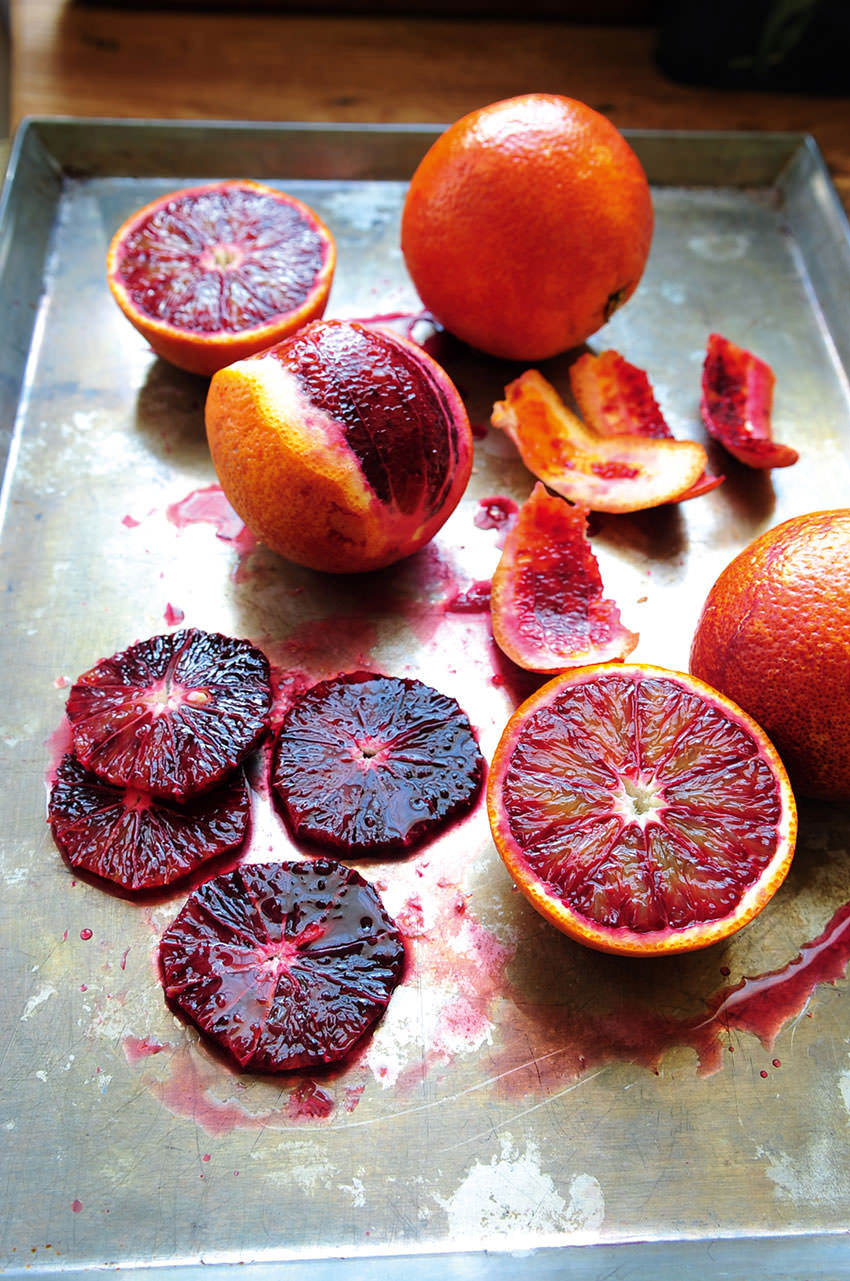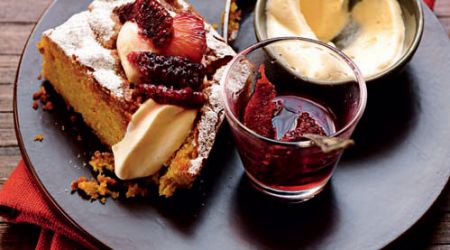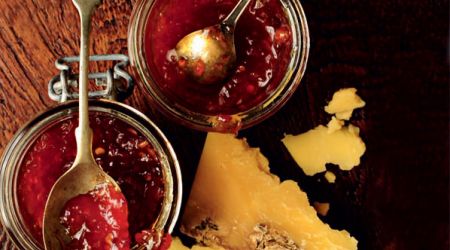Blood Oranges
Rosemary Barron discovers that these blushing beauties – once a symbol of status and power in medieval times – have had a colourful history, no matter which way you segment them.
Late winter, a stroll along the stony paths crossing the slopes of Sicily’s volcanic Mount Etna will take you through a landscape unchanged in centuries. As you pass through neat citrus groves, assailed by a heady perfume and overwhelmed by the beauty of the crimson-blushed oranges among waxy-white flowers and deep-green foliage, you appreciate why the wealthy medieval Medici family chose the orange as its symbol of status and power. Today, this small region of Sicily has been recognised by the European Union as an Indicazione Geografica Protetta (special zone of production) for the blood orange. Blood oranges belong to a botanical family of long-lived evergreens that includes the bitter and the sweet orange, lemon, grapefruit, lime and kumquat.
The first citrus tree to be cultivated in Europe was the citron or citrus medica, named for what was then thought to have been its origin – Media (ancient Persia). Introduced by Alexander the Great after his expeditions to India, the citron spread throughout the ancient Greek world. The citron, or bitter orange, is inedible raw, but its blossom and peel, much admired by the Romans and, later, the Arabs, were used in oils and candied, and its tart juice flavoured cooked dishes. Eight centuries later, when more direct routes were opened between Europe and the East during the Age of Exploration, the sweet orange (citrus sinensis, or ‘orange from China’) appeared, probably brought to Europe by Portuguese traders. Its trees quickly replaced those of the bitter orange except in parts of Spain, where the Seville orange has continued to be grown for the British marmalade market. Blood oranges (a variety of citrus sinensis) are believed to be a natural genetic mutation, first undertaken probably in China, where there is evidence of these fruits growing in the eighth century.
This new orange was interesting enough to gardeners in Eastern antiquity that they continued to propagate the variety. Growers in Portugal, Spain, Greece, Morocco, the Middle East, Malta, and Sicily, have good reason to be grateful for these past artisans because blood oranges are now a vital economic crop in these regions. To the scientists and artists of medieval Italy, blood oranges, with their amazing colour, sweetness and vitality, were a source of wonder. They featured in an opera, “Hesperides”, by Giovanni Battista Ferrari in 1646; a noted Florentine botanist, Pier Antonio Micheli (1679-1737), included illustrations of their wine-coloured juice in one of his manuscripts; and they were painted in all their magnificent beauty by Bartolomeo Bimbi (1648-1723), an artist employed by the Medicis. Their presence – on the table, in the conservatory, as bath and body oils – was a sign of opulence in the status-conscious medieval courts, for they were very expensive. Today, blood oranges are still quite expensive, and remain somewhat of a delicacy throughout Europe. The beautiful red-, purple- or violet-coloured flesh and blushed peel comes from the fruit’s unique (among oranges) ability to produce anthocyanin – a phytochemical found in berries such as blueberries and raspberries, red apples, and red wine.
To develop successfully, this powerful antioxidant needs the right environmental conditions: strongly defined seasons of dry, moderately hot summers and cool winters, with a large differential in day and night temperatures during autumn (when the fruit is maturing) but without deep frost. Where these conditions are not met – such as the citrus growing regions of Florida, where it’s too humid, and California, where there is little temperature differential – blood oranges will revert to their original orange colour. In general, Mediterranean blood oranges tend to be sweeter and more strongly flavoured than American imports. There are three main types of blood orange: the moro, medium-sized and richly flavoured; the tarocco, deep ruby-red, sweetly juiced, with few seeds; and the sanguigno (or sanguinello), mostly grown commercially.
The fruit’s depth of colour depends on the amount of anthocyanin it contains, and this will depend on its growing conditions, varietal, and maturity (older oranges have more). Harvests vary so buy carefully: choose blood oranges that are bruise- and wrinkle-free, with an attractive red blush and gentle, healthy shine to the skin, and that feel heavy for their size. The best blood oranges are sweet, with an appetising tang – they make the perfect dessert fruit. Their balanced acidity also makes them ideal in salads, especially when combined with Mediterranean ingredients such as black olives, onion and feta cheese; rocket and toasted pine nuts; or watercress, walnuts and goat’s cheese. Delicious in chutneys and relishes, they bring colour and zest to platters of ham, pork or chicken, and add drama to cooked dishes.
Blood oranges in themselves offer wonderful opportunities for the romantic (and imaginative) cook. As anthocyanin is a soluble pigment, it’s able to colour the liquid dissolving it. It will turn sorbets, compotes and ice-creams rose red, syrups ruby red, and cupcakes a glorious pink. Start the celebration with the strained juice of blood oranges in fiery-red magaritas or mojitos, aware that you are also drinking to your good health.

Recipes
Get Premium access to all the latest content online
Subscribe and view full print editions online... Subscribe



